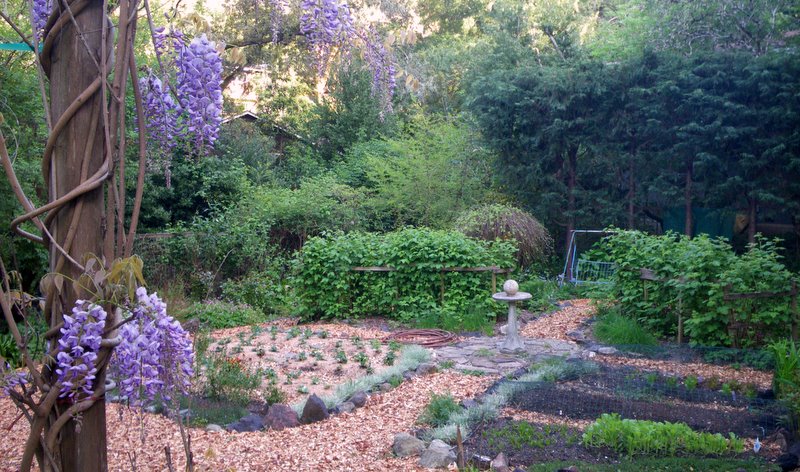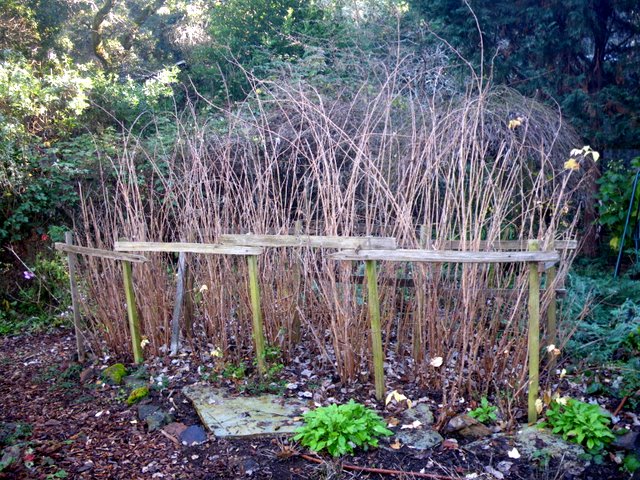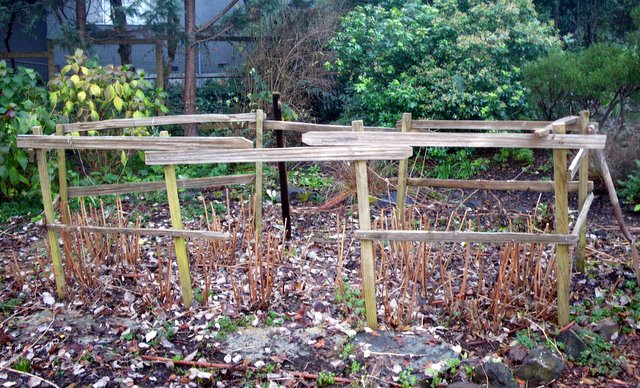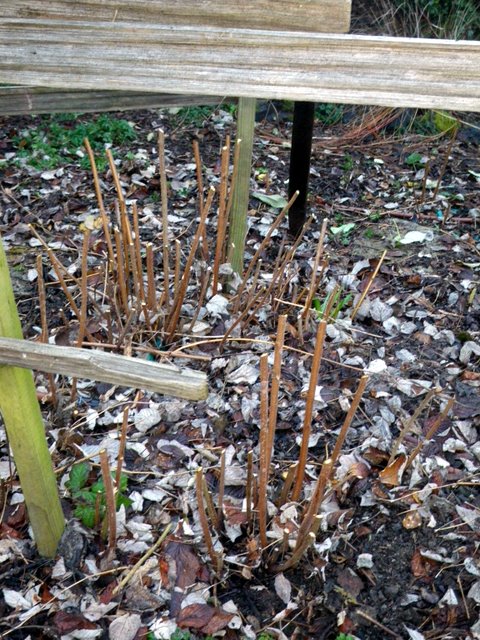
by Avis Licht
Raspberries are delicious and easy to grow, BUT they have some very big drawbacks. So before you go buying and putting those puppies in the ground read this cautionary tale. Then I’ll tell you how to prune them. Remember, this is a pruning post, not a planting post. How to plant and care for your raspberries, will be another day.
Raspberries grow from perennial roots that produce thorny canes. They spread horizontally underground. If you live in a climate where it rains during the growing season, or if you irrigate near the raspberries, you will find that they spread rapidly outside their growing bed.
You can do one of two things to control the spread of underground runners. Next to your bed you can dig a trench 12 inches deep and put in a root barrier. This would be a material like aluminum, wood or plastic that will keep the runners from spreading horizontally.
Or, you can dig up the runners as you see them springing up in the garden. To my chagrin, I have found runners throughout the garden. Especially in late Spring, you can find me running around like a mad woman digging up unwanted canes. Sometimes it feels like they’re growing as fast as I can dig them up. Some people say it’s easy to dig them up, but my experience is that their roots get entangled with other plants. It’s a pain in the butt to dig them up, so Planter Beware!
If you have a small garden, with room for only a few plants, I don’t think it is worth planting raspberries. It takes at least 10 original plants to produce enough fruit to make it worth the trouble. That would be a bed 3 ft wide by 20 ft long. Not to mention the maintenance.
On the other hand, once you’ve decided that you have enough room and can keep up with the maintenance, I say, you can’t have too many. They cost a lot of money in the store, and when you grow them at home, you can eat as many as you want. Who can argue with that?
The most common plants are “ever -bearing” or “twice- bearing” raspberries. You plant them in the Spring and they produce their first crop in the Fall. Prune these shoots back in the Winter, and they produce new shoots in the spring that produce a second crop. These canes will die back after their Fall harvest. New shoots that come up in the Spring will produce your Fall crop.
In the winter you want to cut back all the dead canes to the ground, prune out any weak shoots that are smaller than a pencil in diameter, and cut the live canes back to 12 inches. Dead canes are brown and live canes are green. If you have trouble telling the difference in your canes, make a quick cut towards the top of the cane. If it has green around the stem, it’s a live cane. If the whole cross section of the cut is brown, yep, it’s dead – cut it all the way to the ground.
The pictures below show how mine look before and after pruning.
In these photos you’ll notice that I have them growing inside a simple wooden structure. I took some old Redwood pickets, and put them in the ground around the raspberries. The cross pieces are at 2 ft and 4 ft high. This simple training structure keeps the canes inside, upright and easy to pick. There’s no tying or drooping. Anything that grows outside the structure gets dug up. It also looks nice in winter when the canes are dormant.
Despite my warning about raspberries, I think they are a great plant for the edible landscape as long as you know what you’re getting into.
To find out more about raspberries read this excellent article from Fine Gardening Magazine, How to Grow Raspberries.
3 Responses to “How to Prune Raspberries in Your Edible Landscape”
Sorry, the comment form is closed at this time.

 Follow
Follow






[…] Raspberries are easy to grow and I feel rich when we eat them. They’re expensive to buy, and cheap to grow! Watch out though, they like to spread themselves around the garden. Read about them in this post: […]
Can they be grown in large pots? In that way, there are no risks of any runners.
You can grow raspberries in pots, but unless you grow a lot of pots, you won’t get very many raspberry fruits. I’d say you would need 15 gallon size pots, and probably 5 of them to get several quarts of raspberries. Do you have room?